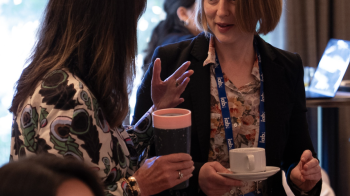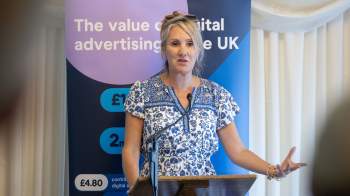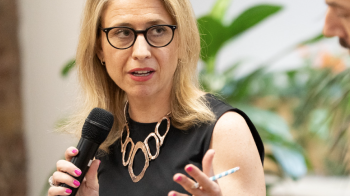Banning ads to tackle obesity will do more harm than good. Here’s why
James Chandler - Chief Marketing Officer, IAB UK
In a piece for The Drum, IAB UK’s CMO James Chandler, argues that the Government’s HFSS ad ban should be open to scrutiny - taking into account what's already being done by advertisers, the existing evidence and the extent of what's being proposed
‘Boris wages war on junk food’, ‘GPs to prescribe cycling’ and ‘Diet plans for the nation’. This was the gist of the commentary when the Government last week announced a raft of headline-grabbing measures aimed at combating the UK’s rising obesity rates. With COVID-19 having propelled obesity up the political agenda, a key part of the Prime Minister’s new strategy is a 9pm watershed on High Fat, Salt and Sugar (HFSS) ads online and TV, and a proposed outright ban on all HFSS online ads by the end of 2022. The response from the ad industry - IAB UK included - has been swift, pointing to a clear lack of evidence to support the effectiveness of further ad restrictions on reducing obesity, and highlighting the huge impact this action will have on both advertisers and the wider economy. Both are major points that need to be raised, yet they also need to be put into context. To get a full picture of why the industry has reacted like this, you need to understand what is already being done by advertisers to combat obesity, what the existing evidence shows and the extent of what is being proposed by No.10.
I don’t think anyone in this industry would disagree with me when I say that obesity is clearly a critical and urgent issue that needs to be addressed. It is also a highly emotive issue, particularly given the fact that we are in the middle of a pandemic. Our health has never been more important or more scrutinised. In this context, it’s easy to get behind any set of policies that set out to tackle obesity - particularly something as clear cut as a ban - and equally easy to criticise arguments against the suggested measures. But that doesn’t mean that the Government’s proposed policies shouldn’t be open to scrutiny. It is precisely because this issue is so important and so complex that they should be.
Here’s what you need to know.
Measures already exist… and are working
The Government has said that its latest raft of advertising policies are designed to restrict children’s exposure to HFSS ads online. But this is already happening. Far from being a free-for-all, digital advertisers are required to stick to strict rules in the CAP Code - overseen by the ASA - that limit children’s exposure to HFSS ads online, both in terms of ad placement and ad content. ASA complaints and casework data suggest that breaches are rare and, as a result, under 16s see less than 0.5 seconds of online HFSS ads per day, per child, according to the Advertising Association.
There is a big lack of evidence
Any change as drastic as an outright ban on HFSS digital advertising needs to be underpinned by robust evidence. This is notably lacking. In fact, the Government’s own 2019 assessment found that a 9pm online watershed would cut children’s calorie intake by just 0.3 calories per day, per child and that the impact on adults was ‘inconclusive’. Some have said this shows that online ads aren’t effective, but that is a huge oversimplification of how advertising works and the complex causes of obesity.
It’s not just ‘junk food’ that’s off the menu
While we don’t yet know the exact details of what is being proposed, the scope of the new measures is likely to go well beyond what you would typically consider to be junk food. From honey to pesto to crackers to cheese, the range of products that fall into the scope of the HFSS restrictions is wide and varied. The fact that Jamie Oliver - a vocal supporter of the Government’s new measures - has recently been promoting cheese hampers via Instagram is just one example of how easy it is to overlook the finer points of the suggested ban. HFSS ads don’t just equate to takeaways and - from Eid ads to Christmas campaigns - the restrictions stand to have far-reaching consequences for the whole digital ad economy.
This ban goes well beyond banner ads
Again, the Government has yet to detail what forms of online advertising will be included in the ban (whether a 9pm watershed or outright), but early indications suggest that it will follow the ASA’s definition of what constitutes an online ad. This includes search ads, social media posts (and not just paid promotions), connected TV, influencer marketing, in-game ads, podcast ads, blogs and vlogs, ads on music streaming services and listings on third-party retail platforms such as Deliveroo and UberEats (to name a few). Just think about that in practice. It could mean that a cheese shop is no longer allowed to post on Facebook or a fish and chip shop can’t list itself on Deliveroo.
So, to all those who have questioned what harm an online ad ban could really do as part of a multi-faceted approach by No. 10, I hope that the above will give you pause for thought. Tackling obesity warrants real, systemic change, but the Government is settling for sweeping policies that deliver headlines over outcomes. Such a move will have far-reaching consequences for the digital ad industry and wider UK economy, with no evidence that it will work. It’s not a decision that should be taken lightly.
This piece was first published on The Drum.
Related content
CAP issues updated LHF guidance for consultation
Learn moreGovernment confirms brand ads exemption in LHF ad ban
Learn moreLHF ad ban guidance for TV+ platforms
Learn moreTrade bodies launch resources to help industry prepare for LHF ad ban
Learn more
Fast forward to 2030 with Futurescape
An in-depth exploration of the attitudes, innovations and media shifts that will shape the years ahead and redefine how we advertise by the turn of the decade



